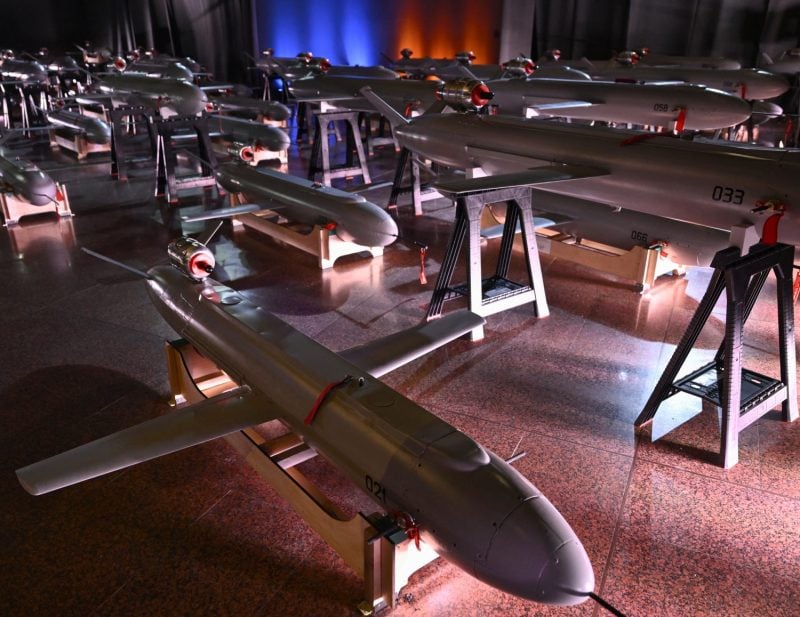NATO Can Help Tackle the U.S. Border Crisis

NATO Can Help Tackle the U.S. Border Crisis
A shared security challenge is a chance for the alliance to shine.
Migrants walk after crossing the Rio Bravo, seen from the Mexican side of the U.S.-Mexico border in Ciudad Juarez on March 29, 2023. Guillermo Arias/AFP via Getty Images)
During his recent meeting with the Ukraine Contact Group, Secretary of Defense Pete Hegseth stated that “stark strategic realities” now prevent the United States from focusing “primarily” on Europe. What this will mean in practice is unclear; it could portend a withdrawal of troops or capabilities from Europe, or it could mean a withdrawal from the North Atlantic Treaty Organization (NATO) alliance altogether.
Keeping the United States engaged in NATO, albeit in a limited fashion, seems to be the most optimal scenario moving forward. But even that scenario may be hard to achieve given long-standing U.S. frustrations over insufficient European defense spending. The major strategic question for European capitals is this: How might Washington be convinced that NATO remains a good deal for U.S. security?
During his recent meeting with the Ukraine Contact Group, Secretary of Defense Pete Hegseth stated that “stark strategic realities” now prevent the United States from focusing “primarily” on Europe. What this will mean in practice is unclear; it could portend a withdrawal of troops or capabilities from Europe, or it could mean a withdrawal from the North Atlantic Treaty Organization (NATO) alliance altogether.
Keeping the United States engaged in NATO, albeit in a limited fashion, seems to be the most optimal scenario moving forward. But even that scenario may be hard to achieve given long-standing U.S. frustrations over insufficient European defense spending. The major strategic question for European capitals is this: How might Washington be convinced that NATO remains a good deal for U.S. security?
Solving the U.S. border crisis is a priority for an overwhelming plurality of American voters – and the Trump Administration. Frustration over illegal immigration has been simmering for years. As European capitals well know, irregular migration is one of the most difficult challenges in contemporary statecraft. The United States needs insights and capabilities from other countries that have experienced similar challenges. Fortunately, NATO can serve as a forum for exactly such exchanges and action.
This requires a mindset shift. For the duration of its existence, NATO’s strategic orientation has primarily been toward Europe. This made sense: Europe was the terrain where a clash with the Soviet Union would likely take place. As the logic—called “defense in depth”—went, it was better for Washington to support its allies in a war in Europe than it was have a war take place in the United States.
There was a significant interlude during the war in Afghanistan—for 20-plus years, allies committed their troops there to, among other things, show their steadfast support for the United States after the horrendous Sept. 11, 2001, attacks.
But the time of by Russia’s illegal annexation of Crimea in 2014, it was clear that Russia once again had its designs on dismantling NATO and reconstructing its empire. The primary focus of the alliance has subsequently been on deterring and defending against Russian aggression in Europe.
Yet organizations such as NATO are robust enough to be able to take on more than one issue at a time. NATO’s challenges are no longer confined to the European continent; trans-Atlantic security, and the actions that underpin it, go both ways. Washington’s frustrations with European unwillingness to meet the alliance’s defense spending targets are caused, at least in part, by a sense that the United States is more invested in the security of Europe than its allies. Why not flip the script and find ways for the alliance to contribute more to North American security?
What can NATO do? Over the years, observers have suggested a number of ways that NATO can be useful for contending with the border crises. Firstly, it can share lessons learned from allies’ own experiences with instrumentalized migration. On NATO’s eastern flank, for example, allies such as Lithuania, Latvia, and Poland have had to contend with Belarus and Russia intentionally sending migrants across their borders to fuel political instability.
On NATO’s southern flank, in 2021, Spain had to contend with Morocco’s enabling of 8,000 migrants, mostly from sub-Saharan Africa, to enter into the Spanish exclave of Ceuta following a political spat. Ongoing seaborne migration, principally from Africa, has challenged European states for years, and they have developed responses—including establishing an entire agency (the European Border and Coast Guard)—to cope.
Why not create, under the North Atlantic Council, a committee to compare perspectives, strategies, and cooperation for dealing with overwhelming irregular and instrumentalized migration?
In terms of monitoring capabilities, the U.S. Department of Homeland Security reportedly operates somewhere in the vicinity of 10 unarmed Predator-class surveillance drones to cover roughly 6,000 miles of land border and 95,000 miles of shoreline.
This is a capability shortfall that allies may be able to step in and ameliorate on a bilateral basis. Europe has used surveillance drones to detect and monitor migration for years. Much like it has with other multilateral responses to complex challenges such as coordinating assistance to Ukraine or commanding and controlling military coalition operations, NATO can play a role in communicating tactical requirements and coordinating allied assistance.
Finally, just as NATO engages in dialogues with Middle Eastern and North African countries, the alliance might also consider building dialogues with Latin American and Caribbean countries. In any theater, migration—legal or otherwise—is often prompted by humanitarian disasters and instability. European partners could usefully contribute their outside perspective and hard-won experiences to bring fresh ideas to discussions on contending with border challenges.
Indeed, the conditions of instability that help drive illegal migration are likely to become even worse in the coming years as countries around the globe contend with ecological shifts and governance challenges. Dialogue with the Central and Latin American region could prove useful for exchanging ideas on how different nations’ militaries can support government activities that help prevent migration crises in the first place, such as humanitarian response operations and security capacity-building.
It is time for the alliance to reimagine what it means to underpin the security of the North Atlantic area. Washington is focused on securing its borders, a challenge that its allies across the pond have also struggled with. If NATO is to remain the world’s premier multilateral military alliance, then it must find ways to help its member states address their key—and common—security challenges. After all, we’re all in this together.
Kathleen J. McInnis is a senior fellow in the International Security Program and the director of the Smart Women, Smart Power Initiative at the Center for Strategic and International Studies.
More from Foreign Policy
-

Russian President Vladimir Putin looks on during a press conference after meeting with French President in Moscow, on February 7, 2022. The Domino Theory Is Coming for Putin
A series of setbacks for Russia is only gaining momentum.
-

The container ship Gunde Maersk sits docked at the Port of Oakland on June 24, 2024 in Oakland, California. How Denmark Can Hit Back Against Trump on Greenland
The White House is threatening a close ally with a trade war or worse—but Copenhagen has leverage that could inflict instant pain on the U.S. economy.
-

Donald Trump speaks during an event commemorating the 400th Anniversary of the First Representative Legislative Assembly in Jamestown, Virginia on July 30, 2019. This Could Be ‘Peak Trump’
His return to power has been impressive—but the hard work is about to begin.
-

US Secretary of State Marco Rubio greets employees at the State Department in Washington, DC, on January 21, 2025. The National Security Establishment Needs Working-Class Americans
President Trump has an opportunity to unleash underutilized talent in tackling dangers at home and abroad.








Join the Conversation
Commenting on this and other recent articles is just one benefit of a Foreign Policy subscription.
Already a subscriber?
.
Subscribe
Subscribe
View Comments
Join the Conversation
Join the conversation on this and other recent Foreign Policy articles when you subscribe now.
Subscribe
Subscribe
Not your account?
View Comments
Join the Conversation
Please follow our comment guidelines, stay on topic, and be civil, courteous, and respectful of others’ beliefs.
Change your username |
Log out
Change your username:
CANCEL
Confirm your username to get started.
The default username below has been generated using the first name and last initial on your FP subscriber account. Usernames may be updated at any time and must not contain inappropriate or offensive language.